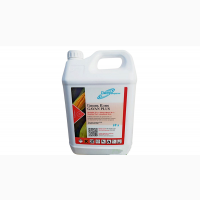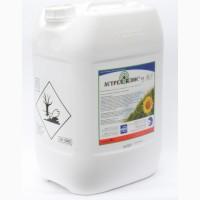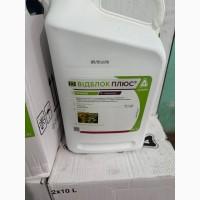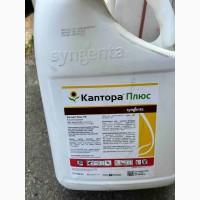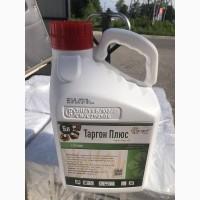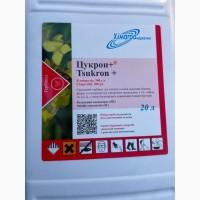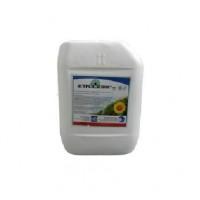/ Fertilizers and plant protection products / Herbicides / Flame Plus - herbicide against broad-leaved weeds...
Sell / buy
Flame Plus - herbicide against broadleaf weeds in wheat and corn crops, Kyiv region.
Price14$
Region:
Kyivska region.
(Vyshgorodok)
Updated:
Flame Plus - a systemic post-emergence herbicide for processing wheat and corn crops from broad-leaved weeds that are difficult to destroy with other herbicides.
Active substance - florasulam, 50 g/l
Preparative form: suspension concentrate (SC)
Action type - Selective
Application method - post-emergence.
The original drug is Hammer
Manufacturer - Green Express
Country of manufacture - China
The processing area is 10 ha.
Tare unit - 5 l, the price is indicated for 1 l.
Culture -Grains
Type of controlling weeds - Dicotyledons
The rate of working solution - 150-250 l/ha(//tractor-service.com)
Culture * Consumption rates of the drug l/ha
*Wheat,Corn * 0.075-0.150
Advantages of the drug:
-high speed of action
-high selectivity of the drug
-quickly decomposes in the soil
- active metabolism in cultivated plants, as a result of which there is no negative effect of use.
Flame Plus is a systemic post-emergence herbicide that destroys broad-leaved weeds in wheat and corn crops. The herbicide is effective in the fight against ragweed, field birch, common sorrel, white quinoa, common sorrel, wild poppy, common gill, common mustard, field mustard, asteraceae, species of thistles, field sedum, marigold, medicinal chamomile, black nightshade, blue cornflower and others.
The herbicide is quickly absorbed and assimilated by weed leaves. Penetrating into the body, the active substance (florasulam) goes to the growth points and stops the synthesis of amino acids. As a result, weeds stop their growth and development. The first signs of herbicide action appear after 2-4 days, and the complete death of weeds occurs after 2-3 weeks.
It is recommended to apply the herbicide by spraying weeds during their mass spread in the period from two true leaves to the flag leaf of wheat or 3-7 leaves of corn. To obtain the best result from the use of the herbicide, it is added as part of the tank mixtures compatible with the preparations Harmonic VG, Grand VG, D-Kamba RK, Onyx RK.
It is not recommended to apply the herbicide on hot days (at an air temperature above +25°С), as well as in crops of wheat plants weakened by diseases or pests.
Active substance - florasulam, 50 g/l
Preparative form: suspension concentrate (SC)
Action type - Selective
Application method - post-emergence.
The original drug is Hammer
Manufacturer - Green Express
Country of manufacture - China
The processing area is 10 ha.
Tare unit - 5 l, the price is indicated for 1 l.
Culture -Grains
Type of controlling weeds - Dicotyledons
The rate of working solution - 150-250 l/ha(//tractor-service.com)
Culture * Consumption rates of the drug l/ha
*Wheat,Corn * 0.075-0.150
Advantages of the drug:
-high speed of action
-high selectivity of the drug
-quickly decomposes in the soil
- active metabolism in cultivated plants, as a result of which there is no negative effect of use.
Flame Plus is a systemic post-emergence herbicide that destroys broad-leaved weeds in wheat and corn crops. The herbicide is effective in the fight against ragweed, field birch, common sorrel, white quinoa, common sorrel, wild poppy, common gill, common mustard, field mustard, asteraceae, species of thistles, field sedum, marigold, medicinal chamomile, black nightshade, blue cornflower and others.
The herbicide is quickly absorbed and assimilated by weed leaves. Penetrating into the body, the active substance (florasulam) goes to the growth points and stops the synthesis of amino acids. As a result, weeds stop their growth and development. The first signs of herbicide action appear after 2-4 days, and the complete death of weeds occurs after 2-3 weeks.
It is recommended to apply the herbicide by spraying weeds during their mass spread in the period from two true leaves to the flag leaf of wheat or 3-7 leaves of corn. To obtain the best result from the use of the herbicide, it is added as part of the tank mixtures compatible with the preparations Harmonic VG, Grand VG, D-Kamba RK, Onyx RK.
It is not recommended to apply the herbicide on hot days (at an air temperature above +25°С), as well as in crops of wheat plants weakened by diseases or pests.
|
Shop, contacts | |
Yuriy / reviews, info. / activity evaluation | |
|
Phone:
+38(xxxxxx
show
| |
All ads user ~1000 | |
Ad ID: #909594
(added by registered user, registration date: 2016-08-10)
Added / Updated: 2025-10-15 09:05 (current, until: 10-15-2026)
Permanent Ad Address:
Impressions / views for today: ?, total: ?
Similar ads
Among them there are many interesting ones...

